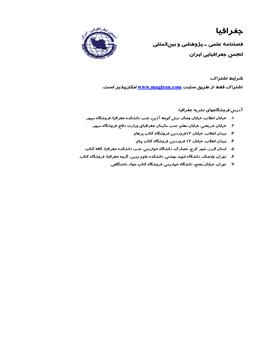Prospects of Iran's heat extreams based on regional mesoscale model output REGCM4
Subject Areas :1 , 2 , Abdollah Ebrahimi 3
1 -
2 -
3 -
Keywords: Extreme Heat, NTD Index, SOM (SOM), Regcm4 model, Iran,
Abstract :
With the advent and intensification of global warming, developing efficient strategies to adapt to this phenomenon is imperative. It is necessary, as the first step to understand vulnerability of different regions against climate change and develop appropriate strategies to the regional capacities for adapting to climate change. The aim of this study is to determine the effect of global warming on changes in extreme high temperatures during the next few decades in the territory of Iran. For this purpose, EH5OM database data for the period 2015 to 2050, the series 3 hours (8 times a day) under scenario A1B. Max Planck Physics Center is downloaded and the model were downscaled to regional REGCM4. The air temperature downscaled to hour data with spatial resolution 0.27 × 0.27 ° arc became the daily average as a result of matrix size 2140 × 13140 respectively. For identification the days of the extreme heat of the index deviation we used normalized temperature (NTD), so that data from the model based on of the Index and scope of the rule of heat (NTD> 0) were sorted In the next step 500 of the first day of the condition (NTD> 2) adaptable to the the order were selected. The results showed the extreme hot prospects for Iran based on self-organizing neural networks (SOM) can be divided into 9 regions. Also in the next decade in the mid-west and extreme heats maximum height strip (mountains and foothills) which will occur as extreme temperature in these areas will be greater than the inner regions and the southern coast of the country. Minimum the occurrence of extreme heat of 1st will be first in desert and 2nd in the South East regions the country.
